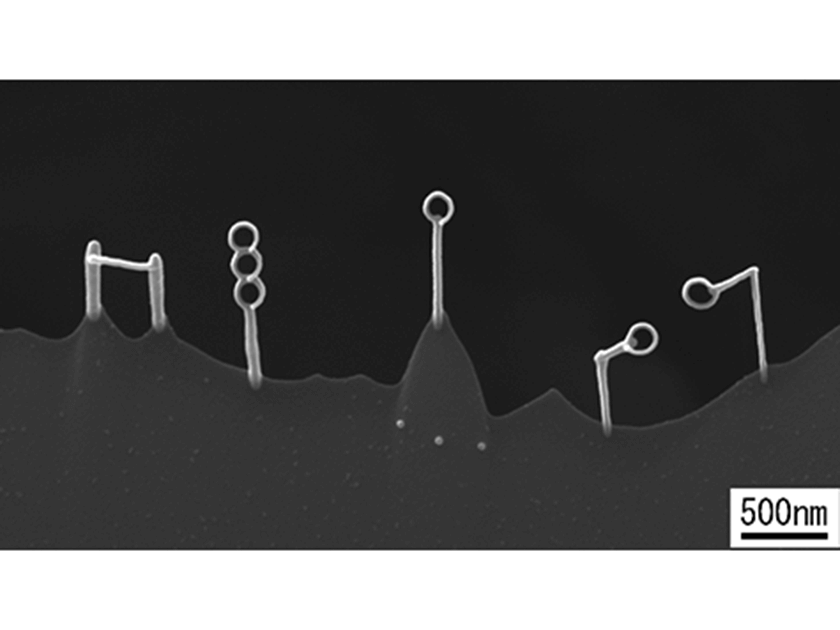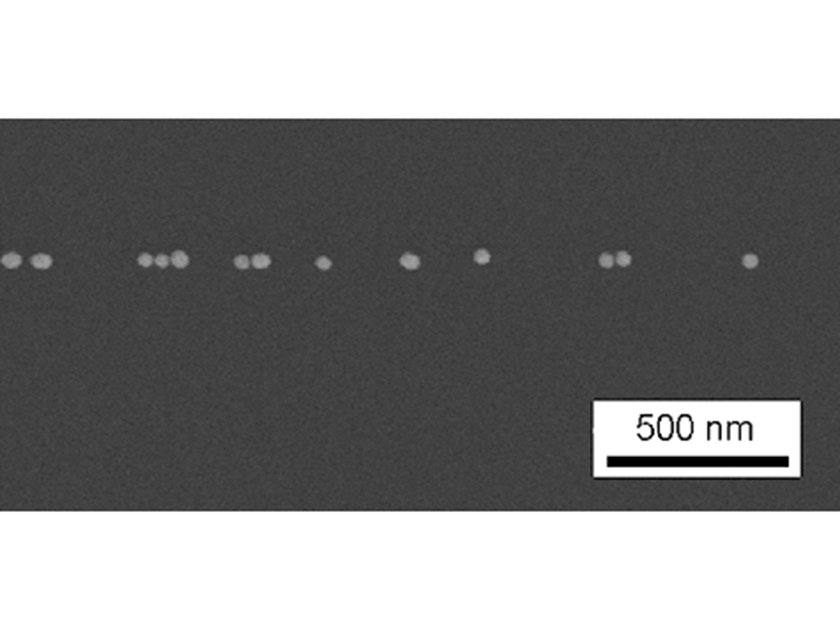Materials Science and Engineering
About Materials Science and Engineering
The department conducts highly creative research related to themes such as highly functional materials, materials for use in space environments, nanomaterials and condensed matter physics, and advanced materials, handling all sorts of materials, including metals, ceramics, organic materials, and composite materials.
Research Domain
Space, ecology, alloys, aviation, oxidation reactions, jet engines, magnetic substances, next-generation energy sources, electric power supplies, nanotechnology, biotechnology, non-ferrous metals, fatigue fractures, composite materials, organic chemistry, linear motorsResearch
SHIMOJO Masayuki
Nanometer-sized materials and structures are receiving much attention due to their potential application to novel devices as well as the fundamental understanding of nanophysics. In our laboratory, we are studying nanofabrication techniques combining with electron microscopy. Figure 1, for example, shows nanostructures fabricated using focused electron beam induced deposition (FEBID) [1]. In this technique, a precursor gas is introduced in the chamber and focused electron beams are irradiated. The electron beams decompose the gas molecules, and the non-volatile part of the molecules deposits on the substrate. Using this technique, nanowires and nanostructures can be formed without using masks or complicated processes. Figure 2 shows a one-dimensional array of gold nanoparticles using an electron beam patterning technique [2]. First, nanoparticles are placed on the substrate. Then, selected particles are immobilized on the substrate by electron beam irradiation. Finally, the unfixed particles are removed from the substrate. This patterning technique could contribute to the fabrication of plasmonic devices, etc.
References
- [1] M. Shimojo et al, J. Vac. Sci. Technol. B 22 (2004) 742.
- [2] T. Noriki et al, Beilstein J. Nanotechnol. 6 (2015) 1010.
 Fig. 1 Nanostructures fabricated using focused electron beam induced deposition.
Fig. 1 Nanostructures fabricated using focused electron beam induced deposition. Fig. 2 One dimensional array of gold nanoparticles [2]
Fig. 2 One dimensional array of gold nanoparticles [2]We want to develop an advanced resource-recycling technology for the sustainable society.

New Energy Materials Science Lab.
In order to realize a sustainable society, it is essential to construct a resource supply system in our country. Therefore, we have been developing an advanced separation and recovery technologies for the efficient use of resources by the wet process. In recent years, we have been investigating an advanced separation and recovery technologies for the urban mine using an ionic liquid (IL). An IL have various green chemical features such as high conductivity, flame retardancy an non-volatility. In our previous works, it was found that rare earth ions such as Pd(II), Pt(IV) and Ln(III) can be extracted by an ILs with an extractant in hydrochloric medium. Moreover, it was found that the extracted Pd(II) into ILs can be recovered as Pd metal using the electrolytic reduction. In the future, we will try to develop an advanced resource-recycling technology from the urban-mine and the spent nuclear fuel for the sustainable society.
ARAI Tsuyoshi
In order to realize a sustainable society, it is essential to construct a resource supply system in our country. Therefore, we have been developing an advanced separation and recovery technologies for the efficient use of resources by the wet process. In recent years, we have been investigating an advanced separation and recovery technologies for the urban mine using an ionic liquid (IL). An IL have various green chemical features such as high conductivity, flame retardancy an non-volatility. In our previous works, it was found that rare earth ions such as Pd(II), Pt(IV) and Ln(III) can be extracted by an ILs with an extractant in hydrochloric medium. Moreover, it was found that the extracted Pd(II) into ILs can be recovered as Pd metal using the electrolytic reduction. In the future, we will try to develop an advanced resource-recycling technology from the urban-mine and the spent nuclear fuel for the sustainable society.
Laboratories
Objectives in Education and Research
The Department of Materials Science and Engineering is structured to develop individuals with the following skills, and shaped by an academic educational base: “Develop innovative individuals with advanced intellectual knowledge of material science, and therefore, who can be an immediate asset for materials manufacturing and development sector”.
- An attitude to tackle wide-range problems by applying the core knowledge and skills of materials science and engineering.
- Ability to challenge and then solve problems using a systematic understanding of materials engineering and materials science.
- A talent for planning solutions to social issues, gained through diverse analysis exploiting materials engineering know-how.